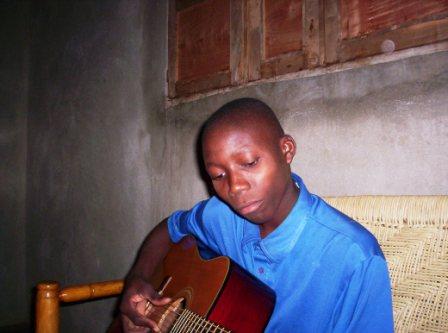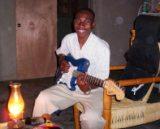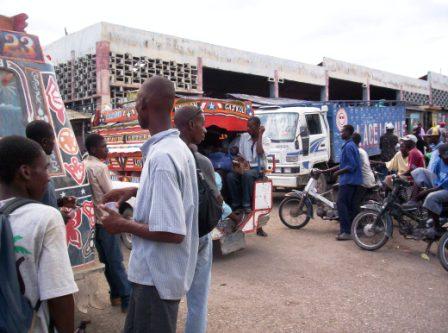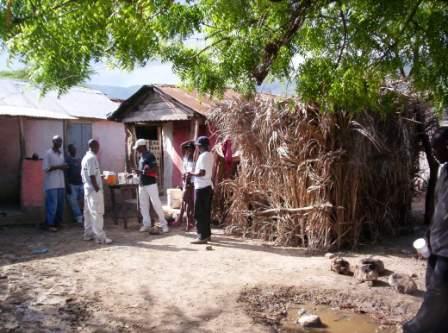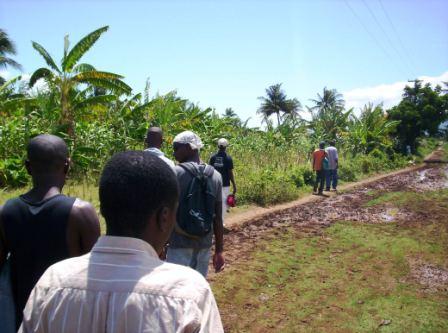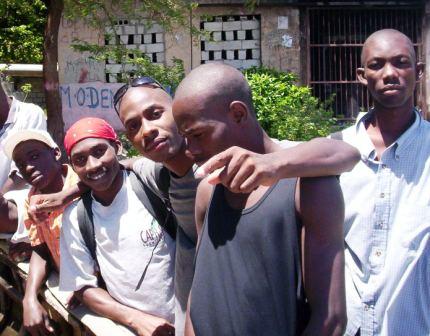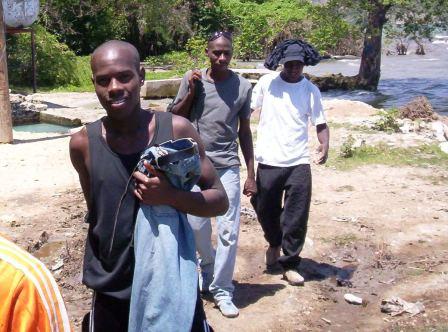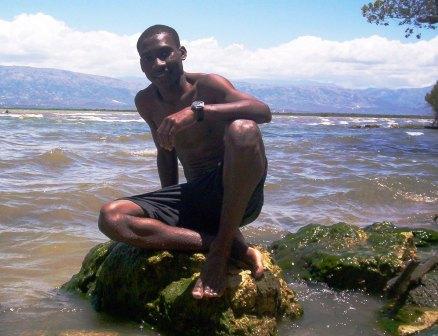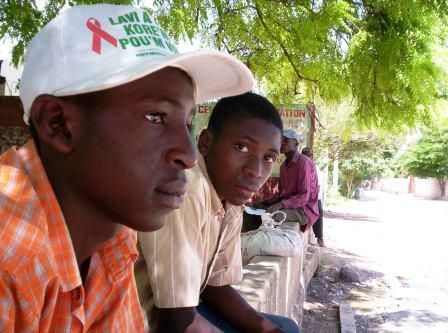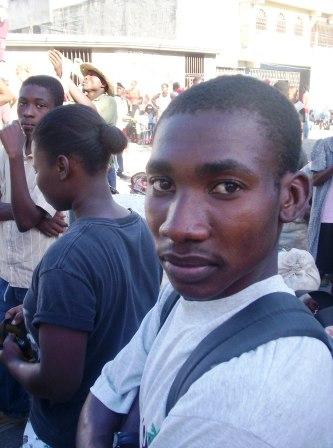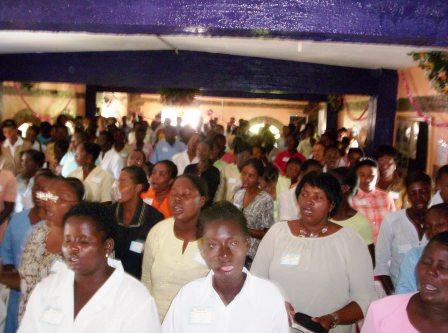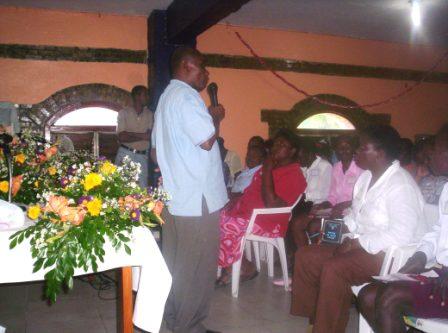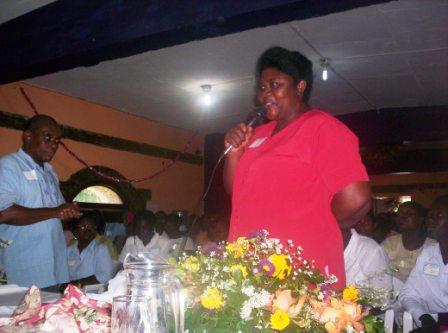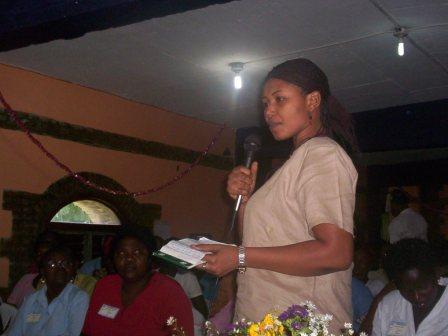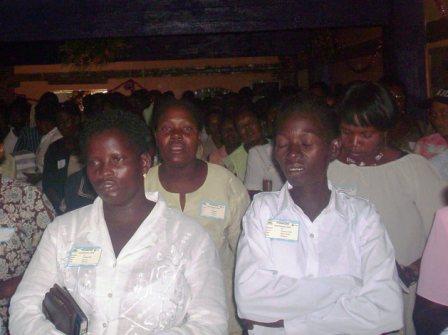This is a story about, in part, how hard it is to accomplish things in Haiti. Despite difficulties of all sorts – logistical, political, economic – Fonkoze is serving over 36,000 clients all over Haiti, and serving them well. It is making plans to serve 200,000 within five years. It is enabling all sorts of poor Haitian women to lift themselves out of poverty.
Mibale is the first major city you come to as you leave the Pòtoprens area on National Route 3, the main inland route into the north. Route 3 leads from the important market in Kwadeboukèt, on the edge of the capital, up and over the mountains that divide the Pòtoprens-area from the Central Plateau. Beyond Mibale is Ench, then Piyon. Eventually, the highway winds into Okap, on the northern coast.
I was only going as far as Mibale. I wanted to spend two days visiting Fonkoze educational programs based at its branch there. We had re-opened educational services in Mibale at the end of May. I had passed through on my way back to Pòtoprens from almost a week of translating for a visitor in early June, but I had gotten sick, so I didn’t get to see anything. This time, I had called Emile, Fonkoze’s coordinator of educational programs for Mibale, and he had planned a schedule of visits that would allow me to see several Basic Literacy classes and several classes on Sexual and Reproductive Health. We would also discuss when Emile wanted to start offering classes in Fonkoze’s third program, Business Development Skills, while I was there.
It was important for me to get to Mibale in the morning because I couldn’t be certain when the classes Emile had scheduled us to visit would meet or how far they would be from his office. He is responsible for educational activities in credit centers that can be almost two hours away by motorcycle.
So I left home early, right at daybreak. I decided to take the back way down the mountain, past Nankonble to Penye, because it would get me to a tap-tap station where I could get a truck straight to Kwadeboukèt. I’d be able to avoid downtown Petyonvil and Delma, so I might save a lot of time sitting in traffic. The part of the trip I’d make on foot is a lot longer than the main route through Mariaman to Malik, and the path isn’t as good, but it’s all downhill. It seemed worth the extra walk.
I was at the station in Penye by 7:00 and in Kwadeboukèt by 7:30. The truck and bus stops for the various destinations on the Central Plateau are crowded along a street by the market. They used to be in downtown Pòtoprens, but moved outside the city a couple of years ago during a period when the violence downtown was especially bad.
There was a pick-up truck waiting when I got to the station, and I stepped right on. It was a small, four-wheel drive with the high clearance that the road through the Central Plateau requires. It has long been a terrible road in places, with deep ruts that fill with mud whenever there’s been rain, steep hills, and large rocks scattered throughout. It took over an hour for the truck to fill up. By the time we were ready to leave, there were 21 of us crowded into the back, five sitting on the cab, fourteen on benches around the sides of the bed, and two on the floor in the middle, plus a considerable amount of luggage.
A lot of work has been done on this road over the last couple of months, so what was a three-four hour drive – less than twenty miles, I think – can now be managed, with some luck, in two. I was in Mibale before 11:00.
Emile was waiting for me at the office. He had arranged for us to visit some centers near Beladè, almost two hours by motorcycle to the east of Mibale. It was Wednesday, which is a market day in Mibale, so none of the nearby centers could meet. The centers we would visit are now served by Fonkoze’s new branch in Beladè, but that branch has no educational programs of its own. We haven’t found the funding. So some of its centers that were formerly served by Mibale still get educational services from there. The first meetings would start at 3:00, so we had just enough time to talk about how things are going and grab a bite to eat before we left.
Communication is hard between Mibale and Beladè. The branch in Beladè is without a phone. In some spots around the Beladè area, Dominican cell phones work, but that means calling Haitian phone numbers is international long-distance. In most of the surrounding mountains, there’s no phone service at all. When we got to the first center just before 3:00, we learned that the meeting day had been switched to Tuesdays. The centers’ teachers hadn’t yet been able to get that message to Emile. We spoke to them about how things were going, and they reported they were pleased. We had come a long way to leave without seeing anything, but, on the whole, Emile was glad of the change. He takes a computer course on Wednesdays, so the Tuesday meetings will be better for him. We had another center to visit, so we had no reason to suspect that the trip would be in vain. We got back on his motorcycle and headed off.
When we got to the second center it was almost 3:30. The center was at a church, about fifty steep feet up a winding path from a road that leads from the main route to Beladè into the mountains around Batis. (See: TheCenterNearBeladè for a couple of pictures.) The closest town is called Paspòm, an odd name that means “my passport.” Emile explained that the name is connected with the proximity to the Dominican border.
The class was scheduled to start at 4:00, but clouds were getting darker and thicker as we waited. Just before 4:00, heavy rains started. The center would not be able to meet that day. We had made the trip for nothing. Or not quite. Shortly after the rain started, the literacy teacher arrived, holding a sheet of plastic over her head. She had come just in case a participant showed up – not very likely, I thought. But she turned out to be right. A few minutes later, a small, fifty-ish woman arrived. She said that she didn’t know whether the class would meet. She herself had just arrived home from a trip to Beladè. But she didn’t like to miss her class, so rain or no rain she decided to show up.
The little shelter that the class meets in has no blackboard. The literacy teacher keeps one at home that she would normally bring to class, but she hadn’t wanted to carry it through the rain. I talked with the participant for a few minutes. Then she and I began an improvised class on the church’s dusty dirt floor. I scratched some letters out with a small rock, and was pleased to see how easily she recognized them. Then she drew a few herself. It seemed as though her progress thus far had been reasonably good. She was, in any case, very excited to be learning to read and write.
Emile and I tried to wait until the rain stop, but though it let up considerably it showed no sign of ending. So we resigned ourselves to getting wet and headed back to Mibale. By the time we arrived, we were thoroughly drenched. It was disappointing to have gotten almost to Beladè and then to have failed to accomplish what we set out to do, but we resigned ourselves, knowing that we’d have another day of center visits before I had to return to Pòtoprens.
Or so we thought. On Thursday, we would be visiting classes closer to Mibale, but they would be meeting earlier. Emile told me that we’d have to be ready to go by 1:00. He’s very conscientious about arriving places on time. It’s an unusual quality in Haiti, but it makes him a good colleague for me.
Late in the morning he got a call from one of his Fonkoze colleagues. The man who called was a credit agent, responsible for disbursing loans and collecting reimbursements. Fonkoze clients do not need to come to a branch to do their banking. Traveling to branches would be both expensive and time-consuming for many of them, so credit agents go to them. This credit agent was in a fix. He had run out of gas while out visiting clients, and was stuck somewhere with lots of cash on his hands. Emile jumped on his motorcycle and rushed off with a gallon of gas in his hand.
I once heard that no good deed goes unpunished. Emile’s good deed certainly didn’t. He was hurrying back to the branch when a dog sped across his path. Before he could react, he had hit the dog and taken a fall. Fortunately, he wasn’t badly injured. Nothing was broken, and he had no deep wounds. But he was scraped up pretty badly. He went to a nearby hospital, where they treated his wounds. I saw him there, and he was more frustrated than hurt. He told me that he felt badly because that meant, once again, that we wouldn’t get to visit centers. I told him not to worry, that I would come again, and that he should just think about healing.
Once I was sure that Emile was alright, I realized that there was no reason for me to spend the night in Mibale. I could save a night’s hotel bill by catching an afternoon bus to Pòtoprens. The vehicles that work these longer routes in the afternoon are, for reasons I don’t understand, less reliable than the ones that work in the morning, but it wasn’t that late just yet, so I decided to try my luck, even though it hadn’t been good so far. I bought a ticket for 75 gourdes, almost two dollars, and got on a big bus that was just about full. My seat was all the way in the back, in the very last row, so I was sure to feel every little bump of the ride, but I wanted to get home, so I took what was available. There was no telling when the next bus would leave.
The return trip took a lot longer than I had hoped. We stopped for over half and hour in Tèwouj. The driver grabbed a wretch, and disappeared under the front of his bus. When we got to Kwadeboukèt it was almost 6:00, and I wasn’t sure whether I’d get home before dark. I had to make a quick choice, either to head to Delma and up through Petyonvil or to take the same shorter route I’d taken down the hill. The shorter route was risky, because I wouldn’t be able to take it after dark. On the other hand, I thought I’d at least be able to make it to the home of Bòs Jacques St. Martin, the father of my friend Elie. Bòs Jacques and his children have been asking me to spend a night with them for a couple of years, so I thought my worst-case scenario would still be pretty good.
Bad decision-making moves as though it obeyed Newton’s laws of motion: Once it gets started it is very much inclined to continue. Deciding to head up through Penye was a bad idea. We were halfway up the road to Penye when the tap-tap I was in was caught in a real downpour. I had my laptop with me, and was sitting in the uncovered area in the back, so I quickly passed my backpack to someone dry and braced myself. I was soaked long before we got to the station, and even when we arrived there was no sign that the rain would stop.
I found an approximately-covered market space and waited for the end of the rain. When it finally did, it was dark, and I decided – once again badly – that I would give up my plan of making it to Bòs Jacque’s house. I’m not sure enough of the way to risk it in the dark. (Elie later pointed out that I could have just called his older brother, who would have cheerfully come to get me.) Instead, I got on another tap-tap, this one headed up Route Frère, to Petyonvil. From there I could walk home along my accustomed route even if it was quite late.
But I had forgotten what heavy rains do to Route Frère. It was badly flooded, almost closed, and the traffic was terrible. The tap-tap made very little progress. Eventually, I lost patience, and decided to walk. Probably another mistake. By this time, it was really dark. I gave up the hope of getting home, and decided just to hike to my godchild’s house. I knew about a back road from Route Frère to the bottom of Delma 75, the street he lives off, but I had never taken it. I didn’t imagine it could be that far.
It is. I had been walking for 45 minutes, and was starting to feel lost. There were no streetlights anywhere, and it was hard to see anything. Finally, I got lucky. A tap-tap drove by, heading to a station down at the bottom of Delma 75. I jumped on. From that station, I’d be able to catch another to the top of the road.
The long day ended well. I had called to say I was on my way, and Jidit, my godson’s mom, was waiting for me. Coffee was ready. By the time I finished a cup of coffee, she was feeding me a plate of rice with a light tomato sauce. For my sister’s sake, I should mention that the sauce was loaded with cashews. She had just received some from her father’s house in the countryside outside of Ench. She and her husband, Saül, couldn’t keep from smiling as they listened to me tell about my trip. There house is small: It’s just one room that they share with their two boys and Jidit’s nephew, Vunet, a seventeen-year-old who came in from the countryside with the cashews. Jidit put me and Vunet on the bed, and she and Saül joined the kids on the floor. She wouldn’t have it any other way.
